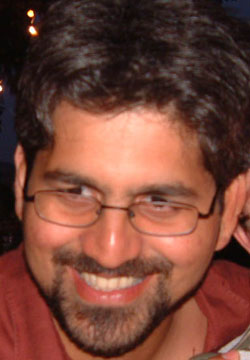Alumnus Dr Anil Kokaram was awarded an Oscar for his visual effects software used in a string of Hollywood blockbuster films.

The Academy of Motion Picture Arts and Science ceremony took place in Los Angeles, two weeks ahead of the glitzy film awards. The Scientific and Technical Awards, hosted by actress Maggie Gyllenhaal, were presented for inventions of special value to film. Anil, now a lecturer at the Department of Electronic and Electrical Engineering, Trinity College, Dublin, worked as a consultant with the UK based software developer, The Foundry www.thefoundry.co.uk. Anil received the Scientific and Engineering Award along with three members of The Foundry software team. Their software has been used on films including 'Casino Royale', 'X-Men' and 'The Da Vinci Code'.
Anil commented on his time at the Department; "I did my PhD in the Department of Engineering under Professor Peter Rayner and this work was the foundation for what I have done with The Foundry. Up till 1998 I was a Research Associate at the Signal Processing Group and I am still in touch with the group. My PhD was in fact a continuation of a lot of work done in that laboratory in audio restoration. Motion estimation turned out to be an important part of that work and my PhD (which I got in 1993) was about algorithms for motion picture restoration. While at Cambridge I was involved with a number of EU projects and on one of those projects I met with Dr. Bill Collis, he figured some of the things I was doing in video processing could be used in special effects for movies and so asked me to come and speak to The Foundry in 1999. In essence they asked me to solve parts of problems that they had and we have been working together since then. Bill was involved with the original effects for the film 'The Matrix' and that encouraged him to think that motion estimation was important for the future of cinema post production. The first problem I worked on for The Foundry was removing objects in movies using motion and background interpolation."
Anil and his colleagues have developed a software package which performs tasks which were previously very difficult to carry out at a post-production stage unless manual editing was used. Anil has particular expertise in motion estimation which is required for many special effects and enhancement operations in motion pictures or videos. In a given film, 25 pictures or frames are taken every second. Through motion estimation, the group developed algorithms capable of tracking the movement and properties of every pixel in a frame in relation to the corresponding pixels in subsequent and preceding frames in a sequence. The software uses motion estimation for a wide range of material to create unique special effects and also perform touch-up tasks that were previously manually done – such as removing blotches or creating new frames in an image sequence.

